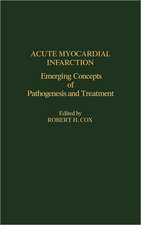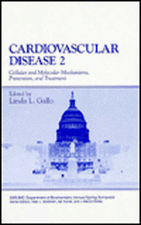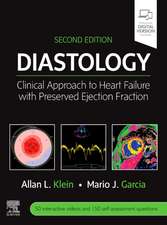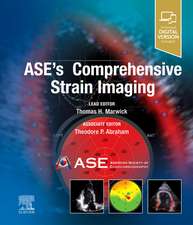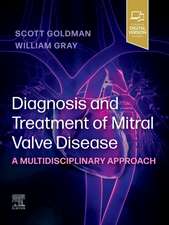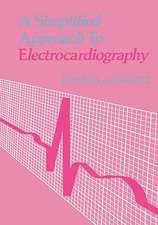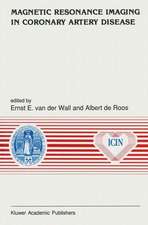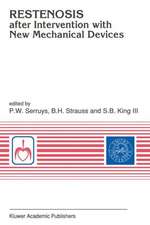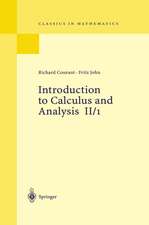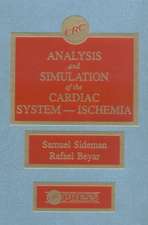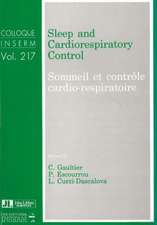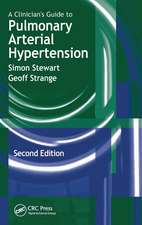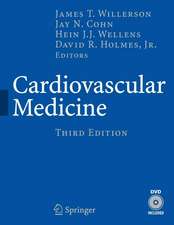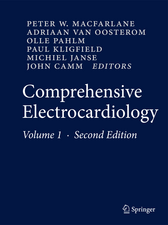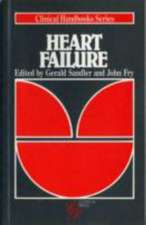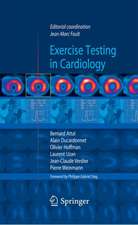Dual-Energy CT in Cardiovascular Imaging
Editat de Patricia M. Carrascosa, Ricardo C. Cury, Mario J. García, Jonathon A. Leipsicen Limba Engleză Hardback – 14 oct 2015
| Toate formatele și edițiile | Preț | Express |
|---|---|---|
| Paperback (1) | 652.46 lei 6-8 săpt. | |
| Springer International Publishing – 23 aug 2016 | 652.46 lei 6-8 săpt. | |
| Hardback (1) | 794.43 lei 38-44 zile | |
| Springer International Publishing – 14 oct 2015 | 794.43 lei 38-44 zile |
Preț: 794.43 lei
Preț vechi: 836.24 lei
-5% Nou
Puncte Express: 1192
Preț estimativ în valută:
152.06€ • 165.23$ • 127.81£
152.06€ • 165.23$ • 127.81£
Carte tipărită la comandă
Livrare economică 17-23 aprilie
Preluare comenzi: 021 569.72.76
Specificații
ISBN-13: 9783319212265
ISBN-10: 3319212265
Pagini: 277
Ilustrații: XIII, 277 p.
Dimensiuni: 155 x 235 x 17 mm
Greutate: 0.72 kg
Ediția:1st ed. 2015
Editura: Springer International Publishing
Colecția Springer
Locul publicării:Cham, Switzerland
ISBN-10: 3319212265
Pagini: 277
Ilustrații: XIII, 277 p.
Dimensiuni: 155 x 235 x 17 mm
Greutate: 0.72 kg
Ediția:1st ed. 2015
Editura: Springer International Publishing
Colecția Springer
Locul publicării:Cham, Switzerland
Public țintă
Professional/practitionerCuprins
Introduction to DECT.- Technical aspects of DECT with dual source.- Technical aspects of DECT with dual layer.- Gemstone Imaging.- Neurovascular Imaging.- Neck imaging.- Thoracic imaging.- Abdominal imaging.- Upper and lower limbs imaging.- Technical Advancements for Cardiac Imaging.- Plaque characterization.- Accuracy of DECT in coronary arteries.- Beam Hardening Reduction and Image Quality Improvements with DECT.- Myocardial CT perfusion.- Myocardial viability.- Pitfalls.- Limitations.- Management of radiation.- Future.
Notă biografică
Patricia Carrascosa MD, PhD is currently assistant professor of Buenos Aires University in Argentina. She obtained her PhD in Virtual Colonoscopy in 2007. She has been working in research in 3D special studies (virtual studies, angiographies) and since 1999 she has focused her main activity in the cardiovascular field in CT and MRI. Mario J. Garcia MD is an internationally known leader in the development and clinical advancement of cardiac diagnostic technology, including cardiac CAT, echocardiography and cardiac magnetic resonance imaging. His pioneering work with CAT coronary angiography, a noninvasive technology that has revolutionized the diagnosis of coronary artery disease, has led to establishing a new standard of care. Ricardo C. Cury MD is a non-invasive cardiovascular radiologist and is the Chairman of Radiology Associates of South Florida, a large multi-specialty group. Dr. Cury is also Director of Cardiac Imaging of Baptist Hospital of Miami and Baptist Cardiac & Vascular Institute. Jonathon Leipsic MD, FRCPC, FSCCT is Chairman of the Department of Radiology for Providence Health Care and the Vice Chairman of Research for the UBC Department of Radiology.
Textul de pe ultima copertă
This book focuses on the rapidly developing and promising novel applications of Dual Energy CT (DECT) in cardiovascular medicine. Although developed many years ago, DECT represents the newest significant advancement in the field of computed tomography, the clinical utility of which has recently expanded as many new applications have been developed. In the field of cardiovascular medicine, DECT has been applied for purposes such as the evaluation of myocardial ischemia, myocardial viability and atherosclerotic plaque characterization.
As the first book of its kind, Dual-Energy CT in Cardiovascular Imaging contains practical and clinically relevant information on the protocols used that provide precise quantification of coronary artery stenosis using either different monochromatic levels or material decomposition, reduction of beam hardening artifacts in perfusion studies and optimizing endovenous contrast, among others. It is therefore a valuable read for residents, fellows and practicing clinicians in cardiac imaging and cardiology.
As the first book of its kind, Dual-Energy CT in Cardiovascular Imaging contains practical and clinically relevant information on the protocols used that provide precise quantification of coronary artery stenosis using either different monochromatic levels or material decomposition, reduction of beam hardening artifacts in perfusion studies and optimizing endovenous contrast, among others. It is therefore a valuable read for residents, fellows and practicing clinicians in cardiac imaging and cardiology.
Caracteristici
First book about spectral cardiovascular imaging Update in general aspects on Dual Energy CT technique Potential new cardiovascular CT applications in the clinical practice




